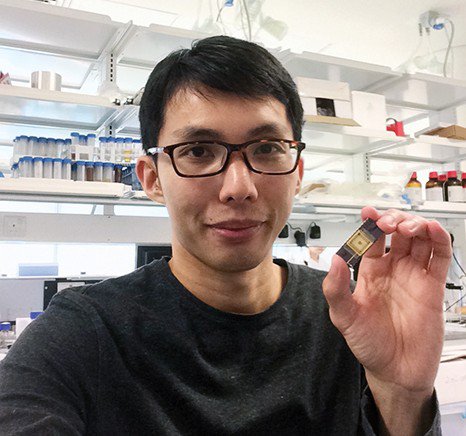Computer & electronics hardware
Desmond Loke
Throw away your RAM and flash drive. Here’s a better type of memory.
Photo courtesy of Desmond Loke

Latin America
Felipe Betancur Posada
Developing low cost devices made with household utensils and based on open source software for the disabled

Global
Alex Hegyi
A new type of camera could let smartphones find counterfeit drugs or spot the ripest peach.

Europe
Petros Psyllos
His wearable tech allows the blind to interpret their surroundings through audio messages

Global
Dinesh Bharadia
A seemingly impossible radio design will double wireless data capabilities.
